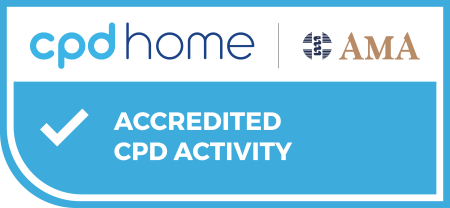Finding accredited CPD
The Principles of Wound Healing and Managing Small Procedures in General Practice course consists of four comprehensive units, each building on key procedural knowledge for general practitioners.
Unit 1: Introduction, Theoretical and Practical Concepts
This unit introduces wound healing principles and patient preparation for clinical procedures. It covers crucial aspects like informed consent, postoperative care, and patient education on conditions such as haemorrhoids and ingrown toenails. Practical skills in administering local anaesthesia are also discussed, emphasising safe, pain-free methods.
Unit 2: Skin Anatomy, Tension Lines, and Wound Healing
Unit 2 delves into the anatomical structure of the skin, including layers, tension lines, and blood supply. Detailed explanations of wound healing stages—primary, secondary, and delayed closure—are provided, alongside factors that affect healing like ischemia, contamination, and patient health. The unit concludes with methods to minimise complications and optimise healing outcomes.
Unit 3: Aseptic Techniques and Local Anaesthetics
This unit focuses on infection control and the effective use of local anaesthetics. Participants will learn aseptic techniques critical for office procedures and how to administer anaesthetics safely and efficiently. The unit also highlights the types of anaesthetics, their dosages, and potential complications, with practical tips on how to minimise pain and achieve optimal patient comfort.
Unit 4: Safety, Equipment, and Complications
The final unit covers essential equipment used in minor procedures, highlighting best practices for their safe usage. It also addresses potential complications such as infection, bleeding, and wound breakdown, offering strategies for prevention and management. Practical advice on patient aftercare and proper follow-up ensures participants are well-equipped to handle real-world procedural challenges.
This course is evidence-based, regularly updated, and includes interactive case discussions and assessments, ensuring participants gain both confidence and competence in managing small procedures.
Cost: $195
Suitable for: All degree qualified medical practitioners.
Study mode: 100% online
Disclaimer: Please note, once you click 'Register now' you will be leaving the AMA’s CPD Home website and entering a third-party education provider’s website. If you choose to register for this learning, you will need to provide some of your personal information directly to the third-party education provider. If you have any queries about how third-party education providers use, disclose or store your personal information you should consult their privacy policy.
Upon completion, your CPD activity record may take up to 4 weeks to be reflected on your CPD Home Dashboard.
You have to log in to see the content of this module.
Provided by
Accredited by

*Medical Board of Australia’s (MBA)’s revised Registration Standard: Continuing professional development (the Standard)